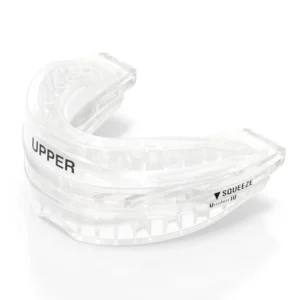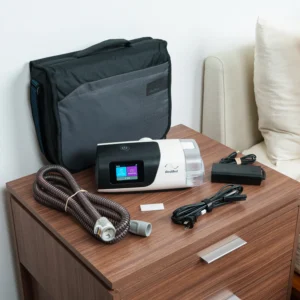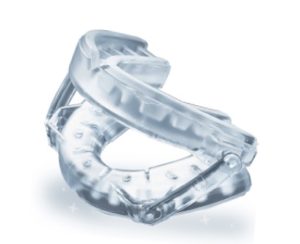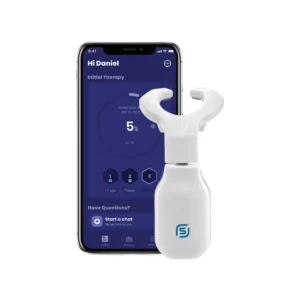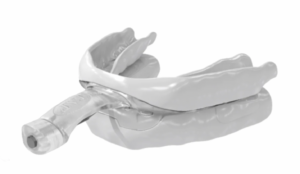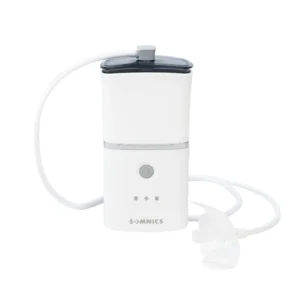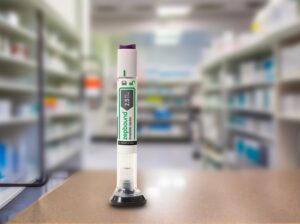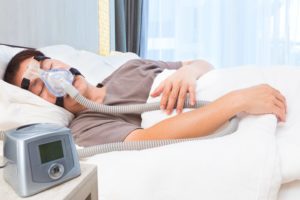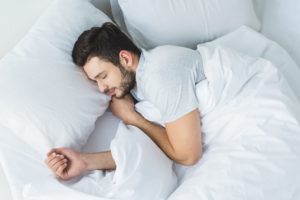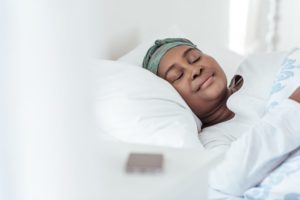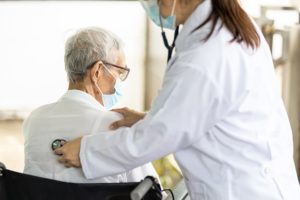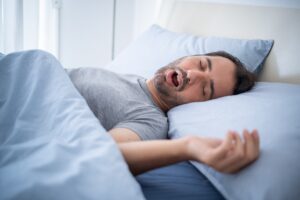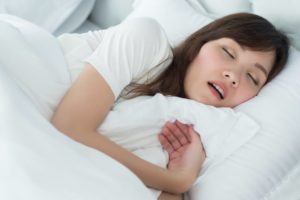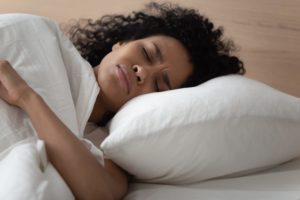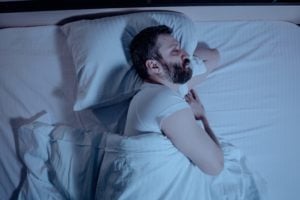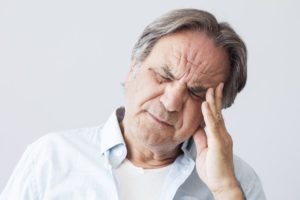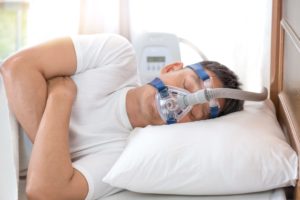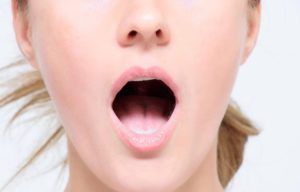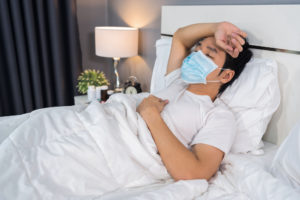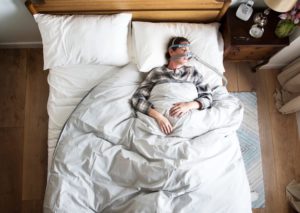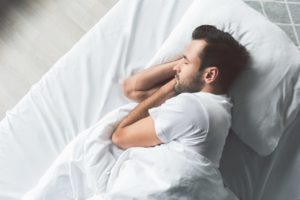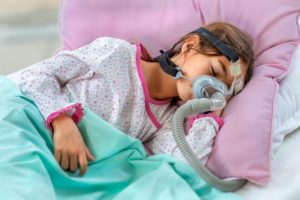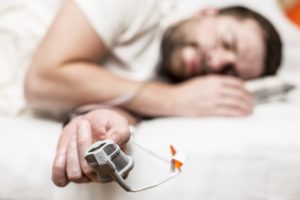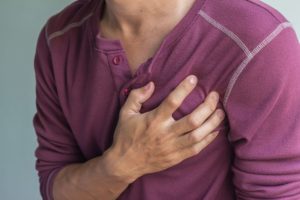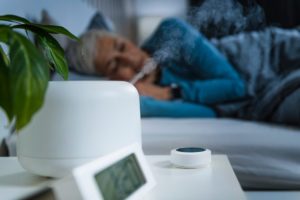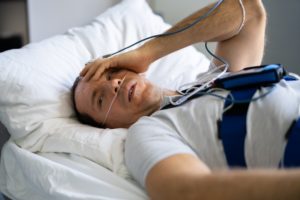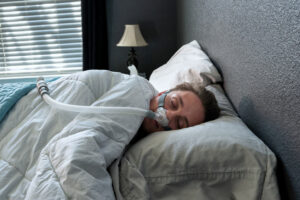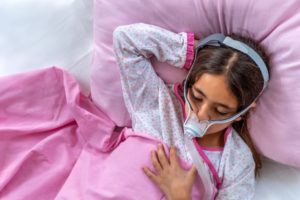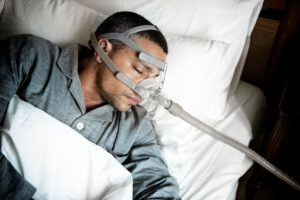When you buy through our links, we may earn a commission. Products or services may be offered by an affiliated entity. Learn more.
Apnea-Hypopnea Index (AHI)
- The Apnea-Hypopnea Index (AHI) measures the number of apneas (complete pauses in breathing) and hypopneas (partial blockages of airflow) per hour of sleep.
- Doctors use AHI results from sleep studies to guide diagnosis and treatment decisions for sleep apnea.
- An AHI of fewer than 5 events per hour is considered normal. Mild sleep apnea is diagnosed with an AHI of 5 to 14, moderate with 15 to 29, and severe with 30 or more.
Obstructive sleep apnea (OSA) is a common sleep disorder, believed to affect at least 2% to 4% of people. During sleep, people with OSA experience multiple partial or complete obstructions of the airway, termed hypopneas and apneas, respectively. Additional symptoms may include loud snoring, gasping or choking, and daytime sleepiness.
If you’ve recently received a diagnosis of sleep apnea or taken a sleep study, you may have noticed an AHI reading on your results. AHI is short for apnea-hypopnea index. This is a scale doctors use when diagnosing OSA. Below, we’ll cover more on how it’s calculated and what the scores mean, as well as potential drawbacks of this diagnostic tool.
Think You May Have Sleep Apnea? Get Help Today

our partner at sleepdoctor.com
10% off Home Sleep Tests
Buy Now“Truly grateful for this home sleep test. Fair pricing and improved my sleep!”
Dawn G. – Verified Tester
What Is the Apnea-Hypopnea Index (AHI)?
The apnea-hypopnea index is a measure doctors use to diagnose and determine the severity of obstructive sleep apnea (OSA). In people with OSA, the airway narrows or collapses during sleep, disrupting normal breathing.
- Apneas are events when breathing completely stops or drops to less than 10% of normal airflow for at least 10 seconds.
- Hypopneas are partial blockages that cause shallow breathing, defined as a reduction in airflow of 30% or more for at least 10 seconds.
Apneic and hypopneic events disrupt sleep and lead to lower blood oxygen levels, contributing to long-term health complications.
The AHI sleep apnea scale helps doctors calculate the severity of your symptoms. The AHI is different from the central apnea-central hypopnea index (CAHI) used for central sleep apnea, a form of sleep apnea that develops when the brain fails to tell the respiratory muscles to breathe.
How Is AHI Calculated?
The apnea-hypopnea index represents the average number of apneas and hypopneas you experience each hour during sleep. To measure it, doctors divide the total number of apneic and hypopneic events by the total number of hours you were asleep. To register as an event, an apnea or hypopnea must last at least 10 seconds or longer.
Doctors typically calculate AHI during a sleep study, or polysomnogram, which monitors your brain waves, blood oxygen levels, heart rate, and breathing while you sleep. Polysomnography generally takes place at a sleep laboratory, but some may be able to perform a simplified version at home.
While the AHI is the primary measurement for diagnosing OSA, your doctor may review other metrics to better understand the severity of your OSA. For example, the oxygen desaturation index (ODI) measures how many times per hour, on average, your blood oxygen levels fall below normal for 10 seconds or longer.
Another important metric, especially for children, is the level of carbon dioxide in the blood. A high level of carbon dioxide may arise due to a long period of breathing at less than full capacity, even if the airway isn’t completely blocked.
What Does Your AHI Score Mean?
AHI is the main way doctors classify the severity of sleep apnea. In adults, higher AHI scores indicate more frequent apneas and hypopneas, which correspond to mild, moderate, or severe sleep apnea. Children are assessed using different thresholds, since even a small number of breathing events can be considered abnormal in younger sleepers.
AHI for Adults
The AHI is measured on a numeric scale. Scores for adults are divided into three categories, which correspond to different levels of OSA severity:
- Mild: an AHI of at least five events per hour but fewer than 15
- Moderate: an AHI of at least 15 events per hour but fewer than 30
- Severe: an AHI of at least 30 events per hour
AHI for Children
While five is the cutoff for adults, an AHI of one or above is sufficient to diagnose obstructive sleep apnea in children. Children breathe faster than adults in order to support their faster metabolism and smaller lung capacity. This is why even one apneic event can have more of an impact for a child.
Although the categories are not as standardized as they are for adults, most sleep experts consider childhood sleep apnea to fall into three categories:
- Mild: Children with an AHI of one to five events per hour may be diagnosed with mild sleep apnea.
- Moderate: Children with an AHI of six to 10 events per hour may be diagnosed with moderate sleep apnea.
- Severe: Children with an AHI of more than 10 events per hour may be diagnosed with severe sleep apnea.
Adolescents may be diagnosed using either the child or adult AHI scale.
Sleep Apnea AHI Chart
| Sleep Apnea Severity | Adult AHI | Pediatric AHI |
|---|---|---|
| Mild OSA | ≥ 5 to < 15 events per hour | ≥ 1 to ≤ 5 events per hour |
| Moderate OSA | ≥ 15 to < 30 events per hour | > 5 to ≤ 10 events per hour |
| Severe OSA | ≥ 30 events per hour | > 10 events per hour |
What Are the Drawbacks of the AHI?
While the AHI can help doctors diagnose OSA, it doesn’t take into account all factors which may point to the severity, or existence, of OSA.
Hypopneas May Be Measured Differently
Most experts agree on the standard definition of an apnea as a reduction in airflow of at least 90%. Hypopneas are more subjective, since they occur when your airways partially collapse. As a result, there’s no standard measurement for what counts as a hypopnea.
Experts have experimented with defining hypopneas according to a certain percentage of decreased airflow, coupled with associated changes in blood oxygen levels or arousals from sleep. However, there’s no set definition, and as a result, different definitions of hypopnea can lead to different AHI scores.
AHI Exclusively Measures the Number of Respiratory Events
The AHI only tells you how often you experience a pause in breathing during sleep. It doesn’t reveal other important elements about that breathing event which could point to the severity of your OSA. For example, it doesn’t show how that pause in breathing affects your blood oxygen levels, which, when repeatedly decreased over time, may increase your risk of related conditions like hypertension and diabetes.
The AHI also doesn’t measure how long an apnea or hypopnea lasts; only that it occurs for at least 10 seconds. People with apneas lasting 30 seconds may experience greater consequences than people whose apneas last 10 seconds.
Since the AHI represents an average taken across the night, it doesn’t reveal patterns in breathing from hour to hour or connections between sleep position and apneic events. Moreover, since the AHI is calculated during one night in a sleep lab, it might not be accurate for someone whose AHI changes from night to night.
Home Sleep Tests Underestimate the AHI
Home sleep tests calculate the AHI based on the total recording time, as opposed to the more precise total sleep time measured in a polysomnogram. As a result, at-home sleep tests often underestimate AHI by about 15%.
In particular, recent studies suggest home sleep tests may produce misleading AHI calculations for women . For many women, the majority of their apnea and hypopnea events occur during the rapid eye movement (REM) stage of their sleep cycle. Events during REM sleep are associated with greater risks to cardiovascular health than those that occur during other sleep cycle stages.
CPAP machines often feature “for her” settings to account for differences in sleep apnea between men and women. However, most home sleep tests only measure the total number of apnea and hypopnea events over the course of the night and don’t specify the stage of sleep in which the events occur. This means women may be at a higher risk of health problems than their home test results indicate.
Why This Matters
It’s important to note these shortcomings of the AHI, because they can affect treatment. If doctors rely solely on AHI when recommending treatment, it may lead them to overlook other aspects of the person’s health history and their related symptoms.
For example, for people with a high AHI but no daytime sleepiness, common OSA treatments may be less effective at reducing the risk of hypertension or related cardiovascular conditions. Scientists are still debating how best to incorporate other diagnostic criteria, such as daytime sleepiness, blood oxygen levels, and blood pressure, for a fuller picture of OSA.
Can You Improve Your AHI Score?
Yes, in many cases your AHI score can be improved with the right treatment and lifestyle adjustments. For people with obstructive sleep apnea, continuous positive airway pressure (CPAP) therapy is the most common and effective option for reducing AHI by keeping the airway open during sleep.
Studies have found that sleeping with a CPAP device can decrease the AHI by 73% . When people with severe OSA use their CPAP devices for at least six hours, their AHI returns to normal levels (below five events per hour).
Other treatments, such as oral appliances, positional therapy, or surgery, may also help depending on the cause and severity of the condition.
Lifestyle changes can make a meaningful difference, too. Losing excess weight, avoiding alcohol and sedatives before bed, treating nasal congestion, and maintaining good sleep hygiene may all help reduce the frequency of apneas and hypopneas. However, because untreated sleep apnea can increase health risks, it’s important to talk with a doctor before trying to manage AHI on your own.

Still have questions? Ask our community!
Join our Sleep Care Community — a trusted hub of sleep health professionals, product specialists, and people just like you. Whether you need expert sleep advice for your insomnia or you’re searching for the perfect mattress, we’ve got you covered. Get personalized guidance from the experts who know sleep best.
References
11 Sources
-
American Academy of Sleep Medicine. (2014). The International Classification of Sleep Disorders – Third Edition (ICSD-3). Darien, IL.
https://aasm.org/ -
Borsini, E., Noguiera, F., & Nigro, C. (2018). Apnea-hypopnea index in sleep studies and the risk of over-simplification. Sleep Science, 11(1), 45–48.
https://pubmed.ncbi.nlm.nih.gov/29796201/ -
Ho, V., Crainiceanu, C. M., Punjabi, N. M., Redline, S., & Gottlieb, D. J. (2015). Calibration model for apnea-hypopnea indices: Impact of alternative criteria for hypopneas. Sleep, 38(12), 1887–1892.
https://pubmed.ncbi.nlm.nih.gov/26564122/ -
National Heart, Lung, and Blood Institute. Sleep apnea – what is sleep apnea? www.nhlbi.nih.gov. Published March 24, 2022.
https://www.nhlbi.nih.gov/health-topics/sleep-apnea -
Pevernagie, D. A., Gnidovec-Strazisar, B., Grote, L., Heinzer, R., McNicholas, W. T., Penzel, T., Randerath, W., Schiza, S., Verbraecken, J., & Arnardottir, E. S. (2020). On the rise and fall of the apnea-hypopnea index: A historical review and critical appraisal. Journal of Sleep Research, 29(4), e13066.
https://pubmed.ncbi.nlm.nih.gov/32406974/ -
Temirbekov, D., Güneş, S., Yazıcı, Z. M., & Sayın, İ. (2018). The ignored parameter in the diagnosis of obstructive sleep apnea syndrome: The oxygen desaturation index. Turkish Archives of Otorhinolaryngology, 56(1), 1–6.
https://pubmed.ncbi.nlm.nih.gov/29988275/ -
Yu, J. L., & Afolabi-Brown, O. (2019). Updates on management of pediatric obstructive sleep apnea. Pediatric Investigation, 3(4), 228–235.
https://pubmed.ncbi.nlm.nih.gov/32851328/ -
Won, C.H.J., Reid, M., Sofer, T., et al (2020, May). Sex differences in obstructive sleep apnea phenotypes, the multi-ethnic study of atherosclerosis. Sleep. 43(5), zsz274.
https://doi.org/10.1093/sleep/zsz274 -
Wallis, Claudia. Sleep Apnea Is Different for Women. Scientific American. April 1, 2020.
https://www.scientificamerican.com/article/sleep-apnea-is-different-for-women/ -
Barbé, F., Durán-Cantolla, J., Sánchez-de-la-Torre, M., Martínez-Alonso, M., Carmona, C., Barceló, A., Chiner, E., Masa, J. F., Gonzalez, M., Marín, J. M., Garcia-Rio, F., Diaz de Atauri, J., Terán, J., Mayos, M., de la Peña, M., Monasterio, C., del Campo, F., Montserrat, J. M., & Spanish Sleep And Breathing Network (2012). Effect of continuous positive airway pressure on the incidence of hypertension and cardiovascular events in nonsleepy patients with obstructive sleep apnea: A randomized controlled trial. JAMA, 307(20), 2161–2168.
https://pubmed.ncbi.nlm.nih.gov/22618923/ -
Boyd, S. B., Upender, R., Walters, A. S., Goodpaster, R. L., Stanley, J. J., Wang, L., & Chandrasekhar, R. (2016). Effective Apnea-Hypopnea Index (“Effective AHI”): A new measure of effectiveness for positive airway pressure therapy. Sleep, 39(11), 1961–1972.
https://pubmed.ncbi.nlm.nih.gov/27568799/




